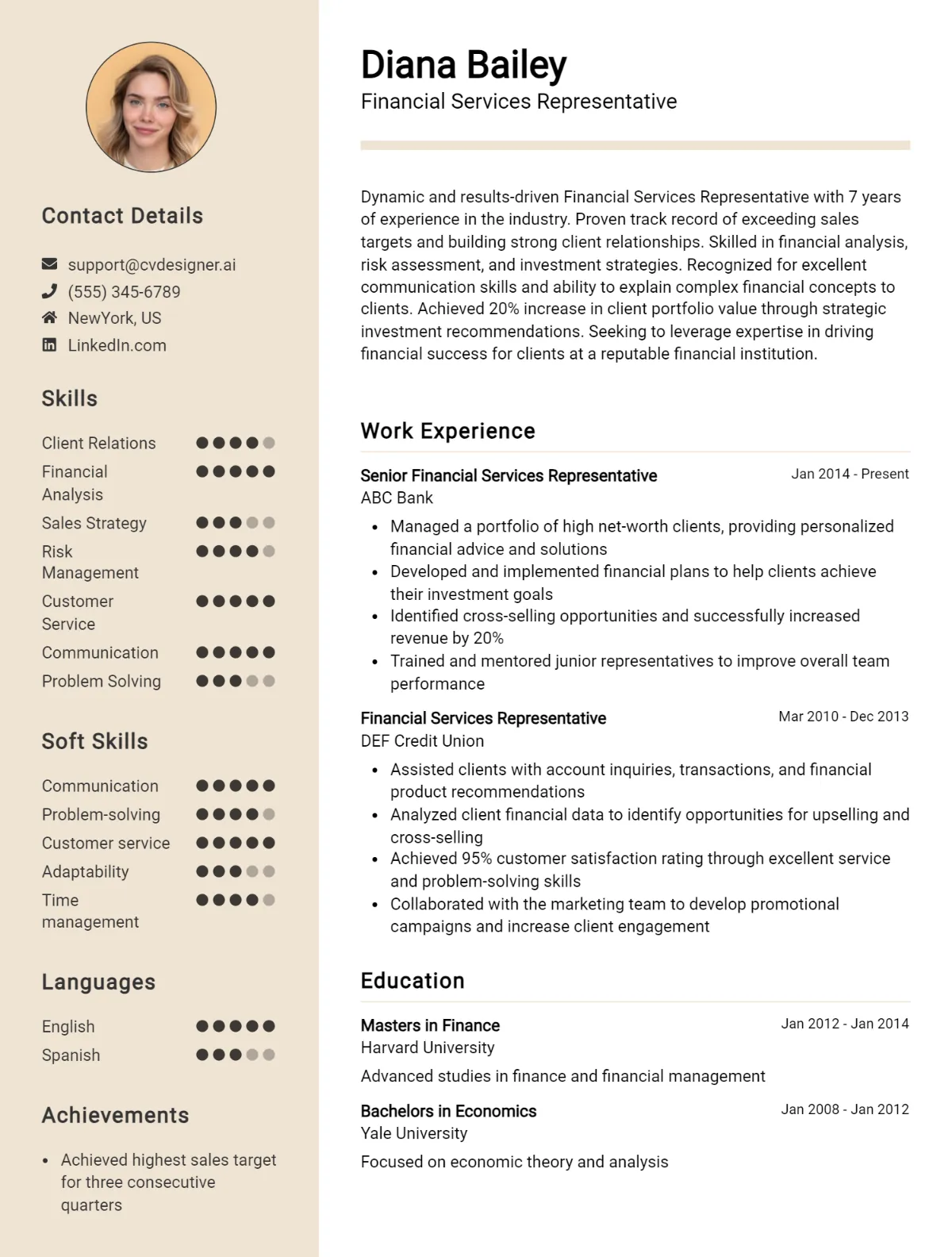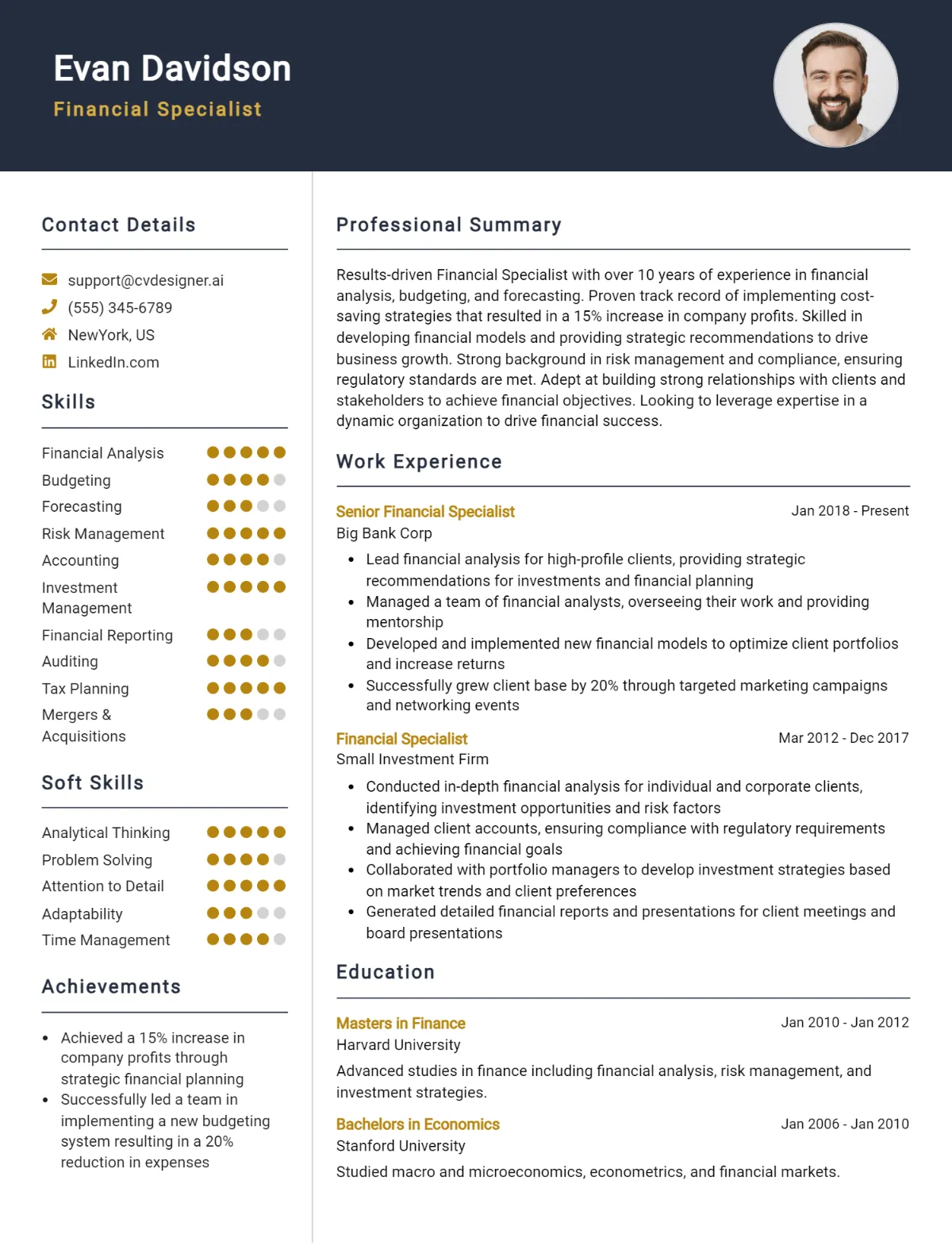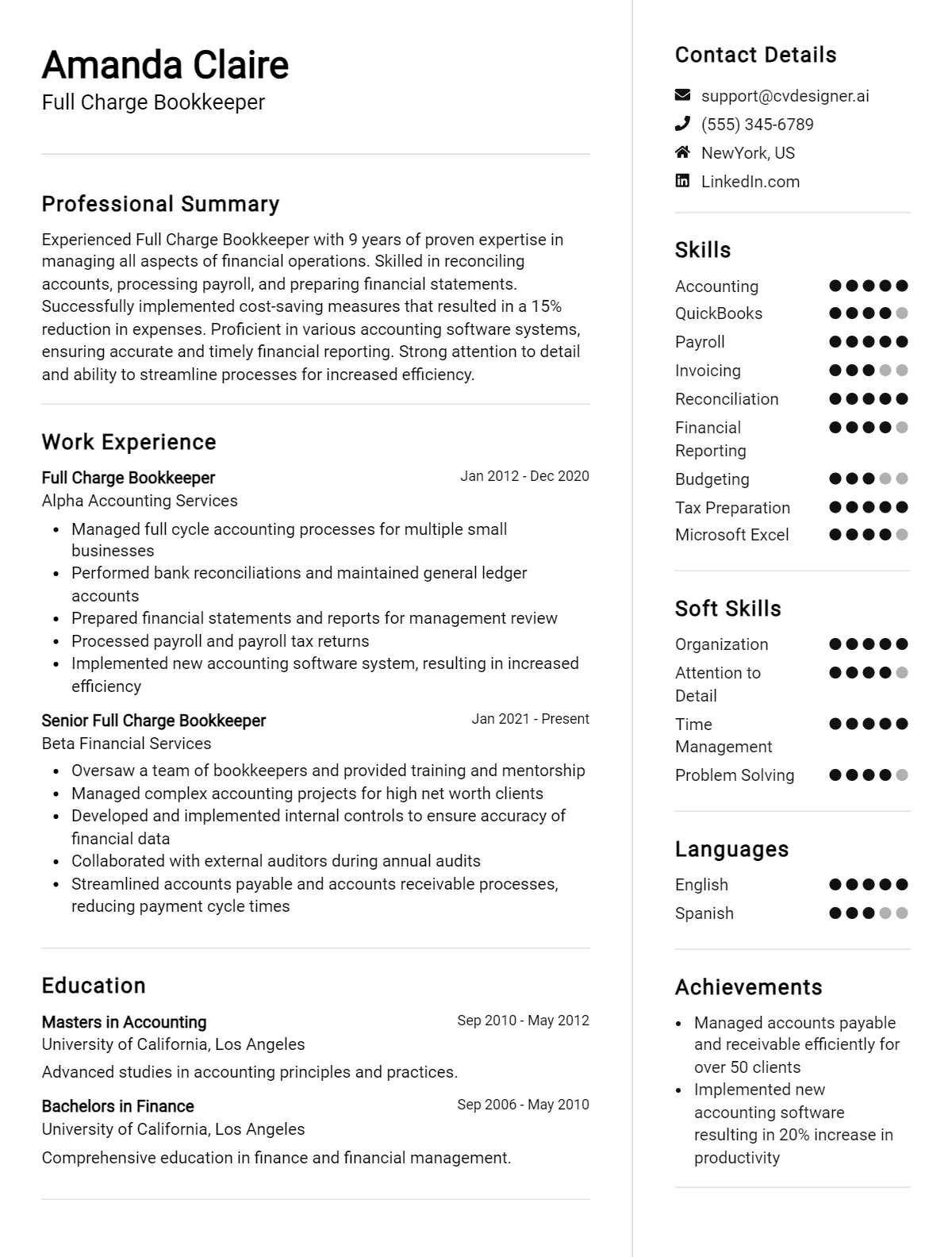Your work experience section is arguably the most critical part of your CV. It provides potential employers with a detailed overview of your career journey, highlighting your skills, achievements, and the value you can bring to their organization. Crafting a compelling work experience section can significantly enhance your chances of landing your dream job. This comprehensive guide will delve into the nuances of showcasing work experience on your CV, covering key aspects, common mistakes, industry-specific tips, and the role of modern tools like CV Designer AI in perfecting your CV.
Importance of the Work Experience Section
Why It Matters
The work experience section is the backbone of your CV. It tells employers about your professional background, the roles you’ve held, the responsibilities you’ve managed, and the accomplishments you’ve achieved. This section allows recruiters to gauge your suitability for the position and understand how your past experiences align with their needs. Moreover, it provides a narrative of your career progression and demonstrates your ability to grow and adapt in different roles.
What Employers Look For
Employers typically look for the following in your work experience section:
- Relevance: How closely your past roles match the job you’re applying for.
- Achievements: Tangible results and contributions you made in previous positions.
- Consistency: A steady career progression without significant gaps.
- Skills: Both hard and soft skills that are applicable to the new role.
- Longevity: Length of time spent in each position, which can indicate your commitment and reliability.
Understanding these criteria can help you tailor your CV to meet the expectations of hiring managers, thus increasing your chances of being shortlisted for an interview.
Use our Best CV Templates
Discover our top-tier CV templates, meticulously designed to make a lasting impression. Choose from a variety of professional layouts to enhance your career prospects.
Structuring Your Work Experience Section
Basic Structure
A well-structured work experience section should be easy to read and follow. Here’s a recommended format:
- Job Title: Clearly state your role.
- Company Name: The name of the organization you worked for.
- Location: City and state or country.
- Dates of Employment: Month and year of both the start and end dates.
- Responsibilities and Achievements: Bullet points detailing your duties and accomplishments.
Example:
Marketing Manager
ABC Corporation, New York, NY
June 2018 – Present
- Led a team of 10 marketing professionals in developing and executing digital marketing strategies.
- Increased website traffic by 35% through SEO and content marketing initiatives.
- Managed a $500,000 annual budget, optimizing spend and reducing costs by 15%.
Detailing Responsibilities
When detailing your responsibilities, use action verbs to start each bullet point. Be specific and avoid vague descriptions. Focus on the tasks you performed regularly and those that are most relevant to the job you’re applying for. Avoid generic statements like “handled various tasks,” and instead, describe the specific duties you carried out.
Example:
- Developed and implemented marketing campaigns for new product launches.
- Conducted market research to identify target audiences and trends.
- Collaborated with the sales team to create promotional materials.
Highlighting Achievements
Achievements provide concrete evidence of your impact in previous roles. Use metrics and data to quantify your success whenever possible. Numbers give hiring managers a clear picture of the scale and scope of your accomplishments and help your CV stand out.
Example:
- Increased social media engagement by 50% through targeted campaigns.
- Achieved a 20% growth in annual sales by introducing a new loyalty program.
- Reduced customer acquisition cost by 30% through efficient ad spend optimization.
By highlighting your achievements, you show potential employers not just what you did, but how well you did it, and the positive results of your efforts.
Tips for Writing an Effective Work Experience Section
Use Action Verbs
Starting each bullet point with an action verb makes your CV dynamic and engaging. Examples include “managed,” “developed,” “led,” “implemented,” “designed,” and “optimized.” These words convey a sense of activity and impact, demonstrating your ability to contribute effectively in a professional setting.
Be Specific and Quantify Results
Specificity and quantification are crucial in demonstrating your value. Whenever possible, include numbers, percentages, and data to back up your achievements. For instance, instead of saying “improved sales,” say “increased sales by 20% through strategic marketing initiatives.”
Example:
- Improved customer retention rates by 25% through personalized follow-up strategies.
- Trained and onboarded 15 new employees, reducing onboarding time by 20%.
Tailor Your Content
Customize your work experience section for each job application. Highlight the responsibilities and achievements that are most relevant to the job you’re applying for. Carefully read the job description and align your experiences to match the requirements and preferences of the employer.
Example:
If applying for a sales manager position, emphasize your experience in sales strategy, team leadership, and revenue growth. Detail any successful sales campaigns or strategies you have implemented and the measurable outcomes they produced.
Keep It Concise
While it’s essential to be detailed, avoid being overly verbose. Aim for clarity and brevity. Use bullet points to keep the section organized and easy to read. Long paragraphs can be overwhelming and may cause important details to be overlooked.
Use Consistent Formatting
Ensure consistency in formatting throughout your CV. Use the same font, font size, and bullet point style for all entries. Consistent formatting makes your CV look professional and well-organized, making it easier for employers to read and follow.
Common Mistakes to Avoid
Vague Descriptions
Avoid vague descriptions like “responsible for various tasks.” Instead, specify what those tasks were and the outcomes. Vague descriptions fail to convey the specifics of your role and achievements, leaving employers guessing about your actual responsibilities.
Example:
Vague: Responsible for increasing sales.
Specific: Developed and executed sales strategies, resulting in a 20% increase in quarterly sales.
Overloading with Information
While it’s important to be comprehensive, avoid overloading your CV with too much information. Focus on the most relevant experiences and achievements. Too much information can make your CV cluttered and difficult to read, which might deter employers from thoroughly reviewing it.
Inconsistent Formatting
Inconsistent formatting can make your CV look unprofessional. Ensure uniformity in how you present dates, job titles, company names, and bullet points. Consistent formatting enhances readability and reflects your attention to detail.
Neglecting to Highlight Achievements
Merely listing responsibilities without highlighting achievements can make your CV less impactful. Employers want to see tangible results. Highlighting achievements demonstrates your effectiveness and the positive outcomes of your work.
Using Jargon
Avoid using industry-specific jargon that may not be understood by all recruiters. Use clear and straightforward language. While jargon might be common in your industry, it can alienate those unfamiliar with it and obscure your actual skills and accomplishments.
Industry-Specific Tips
Tech Industry
In the tech industry, emphasize your technical skills, projects, and relevant experience with specific technologies. Highlight your proficiency with programming languages, software tools, and methodologies. Showcase your ability to work on complex technical projects and deliver innovative solutions.
Example:
Software Developer
XYZ Tech, San Francisco, CA
June 2020 – Present
- Developed and maintained web applications using JavaScript, React, and Node.js.
- Implemented RESTful APIs, improving system integration and performance by 20%.
- Collaborated with cross-functional teams to deliver high-quality software solutions.
Creative Industry
For creative roles, showcase your portfolio, creative projects, and software skills. Highlight any innovative solutions or designs you’ve developed. Emphasize your ability to think creatively, solve problems, and deliver visually appealing results.
Example:
Graphic Designer
ABC Agency, Los Angeles, CA
January 2019 – Present
- Designed marketing materials, including brochures, flyers, and social media graphics.
- Created visual content for client campaigns, resulting in a 40% increase in engagement.
- Managed multiple design projects, meeting tight deadlines and exceeding client expectations.
Healthcare Industry
In the healthcare industry, highlight your certifications, patient care experience, and any specialized training. Demonstrate your ability to provide high-quality care, follow protocols, and work effectively in high-pressure environments.
Example:
Registered Nurse
XYZ Hospital, Chicago, IL
June 2017 – Present
- Provided patient care in a fast-paced emergency department.
- Administered medications and treatments as prescribed by physicians.
- Collaborated with healthcare teams to develop and implement patient care plans.
Business and Finance Industry
For business and finance roles, emphasize your analytical skills, financial expertise, and contributions to business growth. Highlight your experience in budgeting, forecasting, and strategic planning. Demonstrate your ability to analyze data, make informed decisions, and drive financial performance.
Example:
Financial Analyst
ABC Corporation, New York, NY
September 2018 – Present
- Conducted financial analysis and forecasting to support business decisions.
- Developed and maintained financial models, improving accuracy of budget projections.
- Presented financial reports to senior management, driving strategic planning.
The Role of CV Templates and Online Tools
Benefits of Using Templates
Time-Saving
Using CV templates can significantly reduce the time spent on formatting and layout. Templates provide a ready-made structure that you can fill in with your details, allowing you to focus more on content rather than design.
Professional Layouts
Templates offer professionally designed layouts that ensure your CV looks polished and well-organized. This can make a positive impression on potential employers, demonstrating your attention to detail and commitment to presenting yourself professionally.
Customization Tips
While templates provide a good starting point, it’s important to customize them to fit your unique qualifications and the job you are applying for. Adjust sections, fonts, and colors to reflect your personal brand and make your CV stand out.
Best Practices
- Choose a Simple Template: Opt for templates that are clean and easy to read. Avoid overly complex designs that can distract from the content.
- Avoid Over-Designing: Keep the design professional and avoid excessive colors or graphics that can make your CV look cluttered.
- Customize for Each Job: Tailor your CV template for each job application to highlight the most relevant information. This demonstrates your dedication and attention to detail to potential employers.
Real-Life Examples
Success Stories
Example:
Jane Doe used CV Designer AI to create a targeted work experience section for a marketing position. Her detailed and quantified achievements caught the eye of recruiters, leading to multiple interview invitations and a successful job offer from a top marketing firm. By using specific metrics and highlighting her impact, Jane was able to demonstrate her value and stand out from other candidates.
CV Designer AI
Features
CV Designer AI offers a range of features to help you create a professional CV effortlessly. From customizable templates to AI-powered suggestions, it streamlines the CV creation process. The tool provides insights on best practices, recommends content, and ensures your CV is well-structured and tailored to the job you’re applying for.
Benefits
Using CV Designer AI can save you time and ensure your CV is well-structured and tailored to the job you are applying for. Its AI capabilities provide valuable insights and recommendations to enhance your CV, making it more likely to catch the eye of recruiters and hiring managers.
Conclusion
The work experience section is crucial in making a strong first impression on potential employers. By understanding how to structure this section, detailing responsibilities and achievements, and avoiding common mistakes, you can create a compelling work experience section that highlights your qualifications.
Remember to tailor your work experience section to each job application, quantify your achievements, and maintain consistent formatting. Utilize online tools like CV Designer AI to streamline the process and ensure a professional result. Tailoring your CV to match job descriptions can significantly increase your chances of getting noticed by hiring managers.
Ready to create a standout CV? Visit CV Designer AI and use our advanced tools and templates to craft the perfect CV for your next job application. The intuitive interface and AI-powered suggestions will help you highlight your work experience in the best possible way, ensuring you make a strong impression on potential employers.
FAQs
Highlight achievements with specific metrics, use action verbs, and tailor the content to the job description. Focus on the value you brought to each role and the impact you made.
How should I handle employment gaps on my CV?
Be honest and provide a brief explanation. Focus on what you did during the gap, such as freelance work, courses, or volunteering. Highlight any skills or experiences gained during this time.
Should I include every job I’ve ever had?
Focus on the most relevant positions. It’s not necessary to include every job, especially if it’s not related to the role you’re applying for. Highlight the roles that best demonstrate your skills and achievements.
How do I make my work experience stand out?
Highlight achievements with specific metrics, use action verbs, and tailor the content to the job description. Focus on the value you brought to each role and the impact you made.








